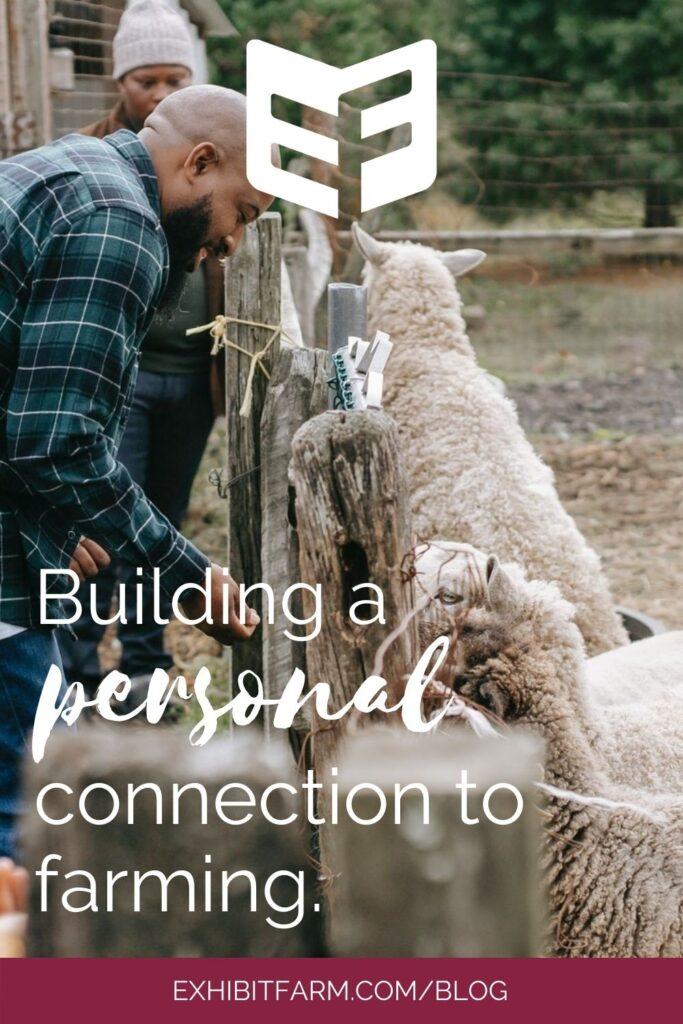
Ask any of your fellow ag educators, “What’s the biggest barrier to agricultural literacy?” and see what they say. There’s a good chance they’ll say something similar.
“People aren’t as connected to agriculture as they used to be.”
That’s not to say this is the only barrier to agricultural literacy; our series on the subject has eleven barriers lined up to address. But it is a pretty major hurdle.
As we’ve written about before, the percentage of American workers that work directly in farming has been dropping steadily since the late 1800s. Right now, that percentage is about 1% of the U.S. workforce. So not only are most consumers not involved with farming, they probably don’t know a farmer or rancher personally. And that means they’re probably getting information about agriculture from second- or third-hand sources, not the folks involved in the work itself.
Opportunities to Make a Personal Connection
So what’s the solution? Most consumers won’t suddenly decide they want to take a part-time job at their local farm. How can we give consumers a personal connection to farming, when it can’t be a full-time connection?
Well, there’s lots of ways. The most obvious is to bring consumers to a farm and let them learn from the farmers themselves. If you sell directly to consumers, you have a golden opportunity right there. If your customers have any questions about how the food’s grown or what some piece of farm equipment does, that gives you a chance to answer it directly. Or, if your sales area isn’t personally attended (like an honor-system roadside stand), you can leave out a sign or display explaining how the food was grown.
Offering a field trip opportunity to your local schools or homeschool co-ops is often a good strategy as well. What teacher doesn’t like hands-on activities? There’s even a program in Michigan called Breakfast on the Farm, which is exactly what it sounds like. It lets people see the farm’s facilities and animals, talk with the farmers, and enjoy a tasty breakfast.
Creating Personal Connections Off the Farm
What if hosting in-person visits to a farm just isn’t an option for you? Well, there’s still some tactics for creating that personal connection to farming.

Presentations in schools, for instance, give you lots of opportunities for answering questions and showing kids some cool facts. One of our clients, the North Dakota Corn Utilization Council, had us make some artificial corncobs so they could have a durable hands-on prop for their presentations. They’ll pass the artificial corncobs around to let kids get a feel (literally) for the differences between field corn, sweet corn, and popcorn.
In general, hands-on exhibits, displays, or activities can go a long way. They make the experience more vivid and realistic. Drawings can show the differences between types of corn, but holding different ears for yourself provides a whole different perspective.
Lastly, you could also try leveraging other places where people are already thinking about animals. One zoo in South Carolina, for instance, has a farm area featuring animals like cows, goats, chickens, even barn owls. True, this sort of outreach means you need other groups to partner with, but an exhibit like this can be a long-term booster of ag literacy. Farm animals might not seem as exotic as lions or tigers, but they’re still unfamiliar to many non-farmers. Just bringing people face-to-face with farm animals gives them a fuller perspective on agriculture.
Helping people form a personal connection to farming can be pretty high-effort, but it also has the potential for high reward. After-program surveys from Breakfast on the Farm, for instance, show significant increases in people’s trust in the ag industry. And since informed, confident consumers are the best kind for the future of farming, giving consumers the facts and personal experience they need to become more informed is worth the effort.
